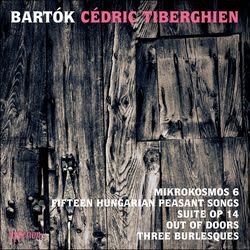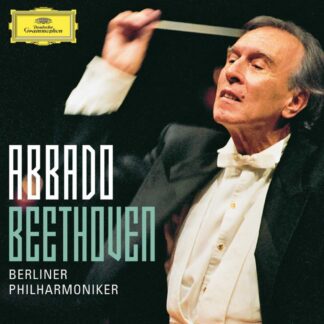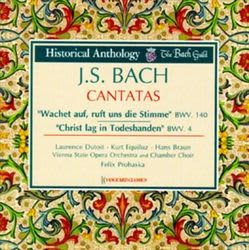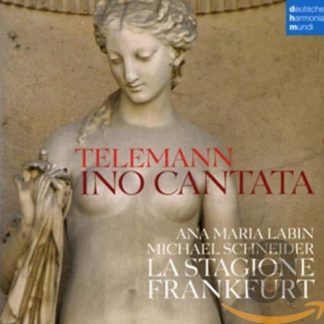Περιγραφή
Καλλιτέχνες
|
The musical life of Béla Bartók (1881–1945) was divided between composition, ethnomusicology, performance and piano pedagogy. His performing across Europe and the United States, and his teaching duties at the Franz Liszt Academy in Budapest, were undertaken, in the main, on grounds of financial necessity. Although neither resulted in a particularly distinctive school of pianism, both were of fundamental importance in framing and contextualizing his compositional output. Bartók could trace his ancestry as a pianist back to Franz Liszt by way of his teacher, István Thomán, who had studied with the great Hungarian virtuoso and composer. He commented that through Thomán, ‘the most initiated hands imparted to me the mastery of poetically colouring the piano tone’. In 1904, the year following his graduation, Bartók wrote a large-scale Rhapsody for piano, which he retained in his repertoire in a version with orchestral accompaniment for the subsequent thirty years. The piece drew on the ethos of the Magyar verbunkos tradition, as transmitted by Liszt’s Hungarian Rhapsodies, albeit refracted through the advanced tonal language of Richard Strauss, referencing urban popular music of the type widely performed by gypsy musicians and still presumed at the time by Bartók to represent the authentic folk music of Hungary. His revelation was the discovery, in the same year, of examples of the traditional music of the countryside, which he found to be quite different in form and style to the urban music. From 1905, through the mediation of his friend and colleague Zoltán Kodály, he began to collect music from the Magyars and other ethnic groups, particularly Slovakian and Romanian, who lived within the borders of Hungary. The earliest of the works on this recording, Three Burlesques, was published in 1912, the title betokening the composer’s interest in the grotesque. Two alternative titles for the first Burlesque (composed in November 1908) that Bartók had in mind were ‘Anger because of an interrupted visit’ (to his then pupil Márta Ziegler, who would become his first wife in 1909) and ‘Rondoletto à Capriccio’. Notionally in C, it opens with a tetchy one-bar ostinato divided between the hands, which is extended by the addition of a melodic fragment that curves upwards and partially descends. In the middle section, insistent taps in the left hand ironically challenge an expressive waltz-like theme in the right hand, and the opening material is gradually reasserted. The second Burlesque, subtitled ‘A bit drunk’ (or ‘A little tipsy’), was written in 1911 and demonstrates the ongoing influence of Debussy, whose music he had begun to study in 1907, particularly through its use of parallel chords in the right hand. In the tonality of E, and imbued with the Phrygian mode that Bartók had observed in many folk melodies, it gently intimates a state of inebriation through the use clipped grace notes in the left hand and a wayward tempo. Debussy’s Feux d’artifice may be seen to hover over the dazzling, scherzo-like third Burlesque in E flat. It begins with a daring touch of bitonality, the music in the right hand sitting a semitone above the left hand, high up the keyboard. In the middle part of the movement it settles on an almost machine-like texture, which anticipates later twentieth-century music, including that of Ligeti. The virtuoso concluding section briefly settles on a sharply hued C major before the home tonality, coalescing major and minor modes, is heroically restored. The Suite, Op 14, in a polymodal B flat, was completed in February 1916, concurrent with the two sets of five songs that hold the following pair of opus numbers. Bartók had been declared unfit for military service in late 1914 and found himself able to return to collecting folk music, the lifeblood of his composition, by the January of the following year. In four movements, though apparently projected to have five (an Andante being rejected), the Suite demonstrates Bartók’s considerable musical development since the composition of Three Burlesques. It does not draw on actual traditional music but as in the Burlesques it incorporates aspects of folk style in an entirely original approach. In the opening Allegretto, four bars of vamped tonic chords lead to a genial melody that bears the impression of Romanian instrumental music. Subsequent to the repeat of the main theme an octave higher, new material appears in which the hands intertwine, the left hovering around a sequence of longer notes. A fragmentary and rather uncertain-sounding reprise of elements of the opening theme gradually gains momentum and brings the movement to its positive close. The second movement is a jovial Scherzo involving experimentation with the whole-tone scale. In its central episode Bartók sets up an ostinato in the left hand that almost has the feel of a jazz riff, with an improvisatory-sounding melody in the right hand. North African Arab music (which Bartók had encountered in the summer of 1913) is referenced in the brilliant and toccata-like third movement. It strongly informs both the main melodic idea, which is principally built from four pitches (D–E flat–G sharp–A), and the scurrying accompaniment. The tonic D on which it closes leads into the threnodic concluding piece. In this sustained movement, a melodic line repeatedly attempts to take shape, but is constantly thwarted and its terminal event, in which the tonic B flat is absorbed into a complex harmony, suggests a sigh. The Fifteen Hungarian peasant songs were begun in 1914, but not finished until the closing year of the First World War. These are based on authentic folk tunes, but go beyond simple harmonization in approach. They effectively form a suite with an opening movement consisting of four ‘old tunes’; a concise Scherzo built on a humorous song which ironically notes that ‘My wife is so clean / That only once a month she washes’; a set of variations on the song ‘Borbála Angoli’, which narrates the tragic story of Angoli who becomes pregnant with the squire’s child and dies in prison, her lover committing suicide over her body; and a bucolic chain of nine pieces recalling a village dance. The final tune, originally recorded by Bartók in Ipolyság in Hont County in November 1910, brilliantly evokes a bagpiper’s performance. Bagpipe music is referenced in Musettes, the third number of the set of five pieces, Out of doors, which appeared in two volumes in 1926, a year that saw the composition of a sequence of great works for the piano, including the sonata and the first piano concerto. Musettes was originally intended to function as an episode in the finale of the piano sonata, but Bartók decided to excise it and reused it in Out of doors instead. It is somewhat more involved in approach than the final Hungarian peasant song discussed above, entailing original music that is redolent of Romanian folk tunes and conjuring up the various preliminaries the piper undertakes in warming up. Written in two related sections, the second varies the first and might be taken to indicate the now self-assured performer. Deep in the bass register and enclosed within highly percussive writing, the first piece, With drums and pipes, cites a few notes from the Hungarian children’s song Gólya, gólya gilice, that references through the image of the stork old enmities from the times that Hungary lay under Ottoman rule. The Barcarolla that follows insinuates the gentle progress of a gondola in a Venetian canal through the arpeggiated contrary-motion-fourth patterns that frame three versions of an idea that might be taken for the melancholy song of the gondolier. The second volume begins with the wonderful nocturnal essay, The night’s music, an example of one of the most original Bartókian inventions in which the sounds of nature at night, including the croaking of frogs, form a remarkable sonic texture. Two further types of material follow and interlace with this: a sombre folk-inspired melody, and an idea that intimates the sound of a shepherd’s flute. Out of doors is brought to its conclusion with the furious toccata-like piece, The chase, that has some commonality with the music associated with the pursuit of Mimi in Bartók’s pantomime The Miraculous Mandarin. Throughout its course Bartók employs a polyrhythm in which three notes in the right hand are played in the same time as five in the left. Mikrokosmos, a ‘musical world in miniature’, which was initiated in 1926 though not brought to completion until 1939, takes pianists from their very first steps right up to the concert stage. All of the pieces in the sixth and final volume make serious technical and musical demands on the performer. Free variations employs a metrically irregular theme and the piece has an overall three-part structure with a lugubrious idea placed at its heart. Bartók’s interest in both counterpoint and symmetry pervades Subject and reflection, the hands playing in contrary motion for much of its course. The grimly humorous From the diary of a fly, in which the fingers interweave, supposedly concerns a fly that manages to escape from a spider’s web, the point at which it breaks away being marked ‘with joy’ in the score. Divided arpeggios and Chromatic invention sound as if they might be dry technical exercises, but this is far from the case and like Hindemith’s Ludus Tonalis they offer a contemporary take on Bach’s keyboard Inventions (the second Chromatic invention inverts the first, with the option of playing the two simultaneously as a piano duet). The deeply expressive Minor seconds, major sevenths offers another exquisite example of the night music style heard in Out of doors, while Ostinato is a fast and furious piece that brings to mind once more the Romanian bagpipe tunes that Bartók so admired. And in the March, Bartók looks affectionately back to the verbunkos tradition, much as he does in the Marcia second movement of the sixth string quartet. The Six dances in Bulgarian rhythm, dedicated to the English pianist Harriet Cohen, bring the volume to a close. They all draw on additive rhythms consisting of groups of two, three and four quaver notes, which Bartók notates using special time signatures (in turn, 4+2+3; 2+2+3; 2+3; 3+2+3; 2+2+2+3; and 3+3+2). Although described as Bulgarian, he had found the same rhythmic characteristic in his research of Romanian music. Bartók explained that the fifth dance was ‘very much in the style of Gershwin’s tonality, rhythm and colour. American folk song feeling’. A similar character may be detected in the optimistic and joyful final dance, aptly perhaps, given that the composer’s closing years would be spent in the United States. |









